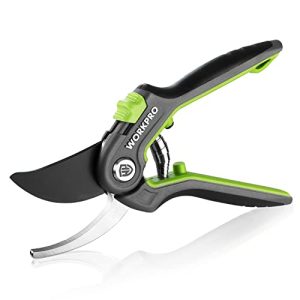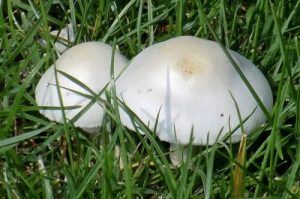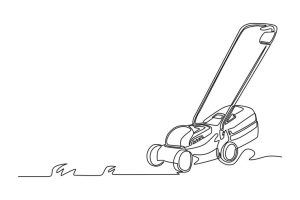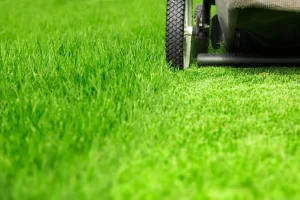Are you tired of watching squirrels turn your bird feeder into their personal buffet? You’re not alone.
Many bird lovers face this frustrating challenge. You’ve set up a lovely feeder, hoping to attract colorful birds to your garden, only to find these nimble intruders stealing all the seeds. But don’t worry—there are effective ways to keep those pesky squirrels at bay.
Imagine a garden where birds chirp happily, undisturbed by unwanted guests. Intrigued? You’ll discover simple, proven strategies to protect your bird feeder from squirrels, ensuring that your feathered friends can feast in peace. Let’s dive in and reclaim your bird sanctuary!
Types Of Bird Feeders
Bird feeders come in various types, each with unique features. Choosing the right bird feeder helps attract diverse bird species. It also plays a crucial role in keeping squirrels at bay. Understanding the differences can guide you in selecting the best option.
Tube Feeders
Tube feeders are long, cylindrical, and often made of plastic or metal. They have small holes for birds to access seeds. These feeders are ideal for smaller birds like finches and chickadees. Squirrels find it hard to cling to the smooth surface. Use baffles above and below to increase squirrel protection.
Hopper Feeders
Hopper feeders resemble small houses with a roof and a reservoir. They store a larger amount of seed, attracting various birds. Their design includes perches for easy access. Squirrels can be a problem due to the open design. Opt for a squirrel-proof model with weight-sensitive perches.
Platform Feeders
Platform feeders are open trays that sit on a pole or hang. They attract a wide range of birds, including larger species. The open design allows squirrels easy access. To deter them, use a dome or cage cover. Consider placing these feeders away from trees and jump-off points.

Common Squirrel Deterrents
Protecting bird feeders from squirrels can be challenging. Effective deterrents include squirrel-proof feeders, baffles, and spicy birdseed. Position feeders away from trees and high surfaces to reduce squirrel access.
Bird feeders attract beautiful birds. They also attract pesky squirrels. These clever creatures can empty a feeder quickly. Protecting your bird feeder from squirrels is crucial. Many effective deterrents can help. Let’s explore some common methods.Squirrel Baffles
Squirrel baffles are barriers. They prevent squirrels from reaching the feeder. These are often dome-shaped or cylindrical. Place them above or below the feeder. They create obstacles that squirrels can’t navigate. Baffles are easy to install. They are a simple solution to deter squirrels.Weight-activated Feeders
Weight-activated feeders respond to a squirrel’s weight. They close access to food when a squirrel lands. This ensures only birds can eat. Birds are lighter than squirrels. The mechanism stays open for them. These feeders are smart and efficient. They keep squirrels at bay.Cage Feeders
Cage feeders encase the food in a wire cage. The openings allow only small birds through. Squirrels can’t fit their paws inside. The cage protects the food supply. This design works well in squirrel-prone areas. It offers a secure way to feed birds.Choosing Squirrel-proof Locations
Bird feeders often attract squirrels, leading to frustration for bird enthusiasts. Choosing the right location can keep squirrels at bay. Identifying squirrel-proof spots involves understanding their habits and preferences. Explore strategic placement to enhance your birdwatching experience.
Distance From Trees And Structures
Squirrels are skilled climbers. They can easily jump from trees to your feeder. Position your feeder at least 10 feet away from trees. Avoid placing feeders near sheds or fences. Squirrels use these structures to access feeders. Keeping a safe distance reduces their chances of reaching the feed.
Height Considerations
Height plays a crucial role in deterring squirrels. Place feeders at least five feet above the ground. Squirrels can jump surprisingly high. Higher placement makes it difficult for them to reach the feeder. Consider using poles with baffles to increase height. This creates an extra hurdle for determined squirrels.
:max_bytes(150000):strip_icc()/how-to-keep-squirrels-out-of-bird-feeders-8646434-final-895c367fca1e4f8cbc344d3ae281a5a5.png)
Diy Squirrel-proofing Techniques
Creating a bird feeder sanctuary can be both rewarding and challenging. Just when you think you’ve attracted a symphony of chirping visitors, squirrels swoop in, disrupting the peace. With a little ingenuity, you can outsmart these furry bandits. Dive into some practical DIY squirrel-proofing techniques that can help maintain your feeder as a safe haven for feathered friends.
Using Pvc Pipes
Have you ever considered PVC pipes as your secret weapon against squirrel raids? They’re inexpensive and easy to work with. Simply cut a length of PVC pipe that’s at least three feet long. Slide it over the pole or wire holding your feeder.
The smooth surface of the pipe makes it difficult for squirrels to climb. It’s like watching them try to scramble up a pole covered in ice. They slip, slide, and eventually give up. This simple addition can be a game-changer.
Could you imagine the surprise on their faces as they slide back down? It’s almost entertaining, and it leaves your feeder untouched for birds to enjoy.
Greasing Poles
Greasing poles is another straightforward method to deter those persistent squirrels. Use a non-toxic lubricant like petroleum jelly. Apply it generously to the poles supporting your feeder.
The slick surface prevents squirrels from gaining a foothold. They can’t climb up without sliding back down. It’s a funny sight, but it serves a practical purpose.
Have you tried this before? It’s effective but needs regular maintenance. Reapply every few weeks to keep your defenses strong. This extra step ensures the birds have a peaceful feeding spot.
These DIY techniques are accessible and effective. By using household materials, you can protect your feeder from squirrels without breaking the bank. What other creative solutions have you discovered in your quest to safeguard your bird feeder? Your insights might inspire someone else to try something new.
Natural Repellents
Bird lovers often face a common problem: squirrels invading their feeders. They can be quite persistent and clever. Natural repellents offer a way to keep squirrels away without harming them. These methods use simple ingredients and garden plants. They create a barrier that squirrels dislike but birds find harmless.
Spicy Bird Seed Mixes
Squirrels hate spicy flavors. Birds do not mind them at all. Add cayenne pepper to your bird seed. The spice deters squirrels effectively. It doesn’t affect birds’ taste buds. Mix the pepper evenly with seeds. Ensure it covers the entire batch. Use gloves to protect your skin from irritation. Reapply after rain to maintain effectiveness.
Planting Squirrel-repellent Plants
Plants can act as natural squirrel repellents. Some plants have scents squirrels avoid. Plant mint or marigolds around the feeder area. Their strong smell repels squirrels. Garlic plants also help keep them at bay. These plants are easy to grow and maintain. They beautify your garden while protecting the feeder. Choose plants that suit your climate and soil.
Technology In Squirrel Prevention
Technology aids in keeping squirrels away from bird feeders. Devices like squirrel-proof feeders and spinning poles deter their approach. These tools make it difficult for squirrels to reach the seeds, ensuring birds can eat in peace.
In the age of technology, keeping squirrels away from your bird feeders has become more sophisticated and effective. Gone are the days when you simply hoped for the best after hanging a feeder. Now, with a little tech-savvy, you can ensure that your birdseed is reserved solely for your feathered friends. But how do these gadgets actually work? And are they worth the investment for a backyard enthusiast like you?Squirrel Spinners
Squirrel spinners are innovative devices designed to give those pesky squirrels a wild ride! When a squirrel attempts to climb onto your feeder, the spinner activates, rotating to gently fling the squirrel off. It’s a harmless yet effective deterrent. Imagine sitting on your porch, watching with a chuckle as a squirrel makes a daring attempt only to be twirled harmlessly back to the ground. These gadgets attach easily to most bird feeders and require minimal setup. They typically run on batteries or solar power, which means you don’t need to worry about complex installations. It’s a small investment that can save you loads of frustration—and perhaps even provide some entertainment.Motion-activated Sprinklers
Another tech-savvy solution is the motion-activated sprinkler. As soon as a squirrel comes too close, the sprinkler releases a quick burst of water, startling the intruder away. This method not only keeps your feeder squirrel-free but can also deter other unwanted visitors. Have you ever thought about how to keep your garden lush while simultaneously protecting your birdseed? This dual-purpose tool can help with both. Setting up these sprinklers is straightforward. They usually connect to your garden hose and can be positioned anywhere in your yard. Adjust the sensitivity and range settings based on your specific needs. With this, you can enjoy watching birds feed without constantly checking if a squirrel is stealing the show. Technology offers creative solutions to age-old problems. Whether you’re tech-savvy or just looking for a simple fix, these modern tools can help you maintain peace in your garden. Are you ready to embrace the future of squirrel prevention?Maintaining Bird Feeder Security
Maintaining bird feeder security is essential to ensure that birds get their share of food. Squirrels can be persistent and crafty in their attempts to access bird feeders. Implementing effective measures can help keep these furry intruders at bay. With a few strategic steps, you can create a safe haven for your feathered friends.
Regularly Checking Feeders
Inspect your bird feeders frequently. Look for signs of squirrel activity, like bite marks or damage. Make sure the feeder is intact and functional. A damaged feeder invites more squirrel raids. Check if the feeder is securely attached to its pole or branch. This helps prevent squirrels from knocking it over. Keep an eye on the amount of birdseed. If it’s disappearing too quickly, squirrels might be the culprits.
Adjusting Deterrents
Evaluate the effectiveness of your current deterrents. Are they still working? Sometimes squirrels adapt to existing barriers. You might need to adjust or enhance them. Consider adding a baffle above or below the feeder. This makes it difficult for squirrels to climb. Place feeders at least 10 feet away from trees or structures. Squirrels can jump long distances. Use feeders specifically designed to deter squirrels. These often have weight-sensitive mechanisms.

Understanding Squirrel Behavior
Squirrels are clever, agile creatures with a knack for getting into bird feeders. To protect your bird feeder, it’s crucial to understand how squirrels think and move. This knowledge can help you create effective deterrents and feeding strategies.
By observing their behavior, you can plan better defenses. Each aspect of a squirrel’s behavior plays a role in how they access your bird feeder. Let’s dive into two key behaviors: their feeding patterns and climbing abilities.
Feeding Patterns
Squirrels are opportunistic feeders, always on the lookout for food. They prefer seeds and nuts, which makes bird feeders an attractive target. Squirrels eat throughout the day, but peak feeding times are in the morning and late afternoon. Observing these patterns can help in planning when to refuel bird feeders. Keeping feeders full at night might reduce squirrel visits.
Climbing Abilities
Squirrels are excellent climbers. They can scale trees, poles, and buildings with ease. Their sharp claws and strong hind legs give them great climbing skills. They can jump up to ten feet horizontally, making it easy to reach feeders. Understanding this helps in placing feeders strategically. Position feeders away from launching points like trees and fences.
Frequently Asked Questions
How Do I Stop Squirrels From Eating My Bird Feeder?
Use squirrel-proof feeders to deter them. Install baffles above and below feeders. Place feeders away from trees. Use spicy birdseed, as squirrels dislike capsaicin. Regularly clean up fallen seeds to reduce attraction.
Does Aluminum Foil Keep Squirrels Away From Bird Feeders?
Aluminum foil can deter squirrels from bird feeders. Squirrels dislike the texture and noise of foil. Wrap foil around feeder poles or hang strips nearby. This method isn’t foolproof, but it may help reduce squirrel activity. Regularly check and adjust the foil for effectiveness.
Where Is The Best Place To Put A Bird Feeder To Avoid Squirrels?
Place the bird feeder on a tall pole, at least 5 feet high, with a squirrel baffle. Ensure it’s 10 feet away from trees or structures that squirrels can jump from. This setup helps keep squirrels away while providing a safe feeding spot for birds.
Is There Really Such A Thing As A Squirrel-proof Bird Feeder?
No bird feeder is completely squirrel-proof. Some feeders are designed to deter squirrels effectively. Use weight-activated mechanisms and squirrel baffles to minimize squirrel access. Regular maintenance and strategic placement can help protect bird feeders from squirrels.
Conclusion
Preventing squirrels from accessing bird feeders requires simple solutions. Use squirrel-proof feeders. Hang feeders away from trees and fences. Add baffles above and below the feeder. These steps help keep squirrels at bay. Birds can then enjoy undisturbed feeding. Remember, a little effort goes a long way.
Consistency is key. Enjoy watching your feathered friends thrive. Happy bird watching!






